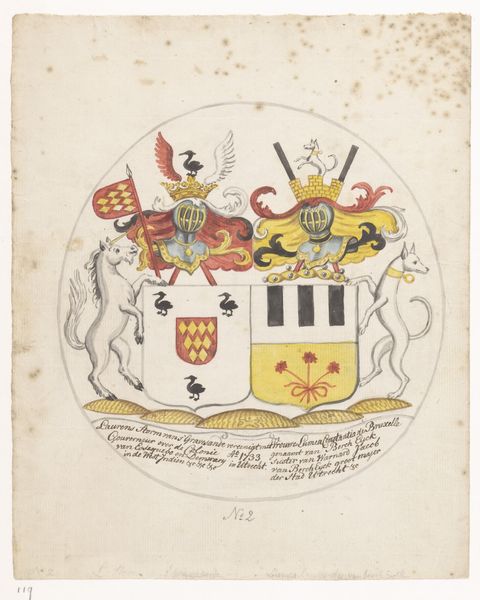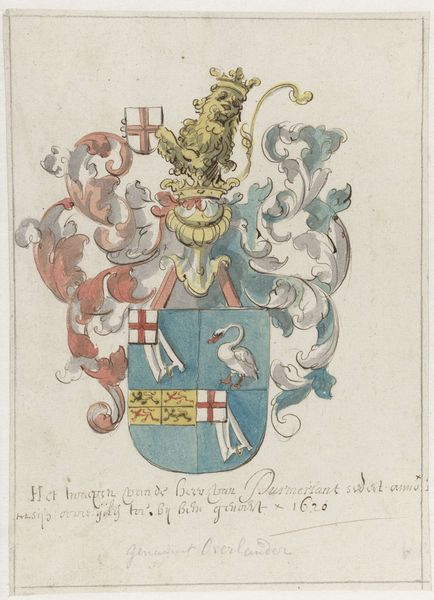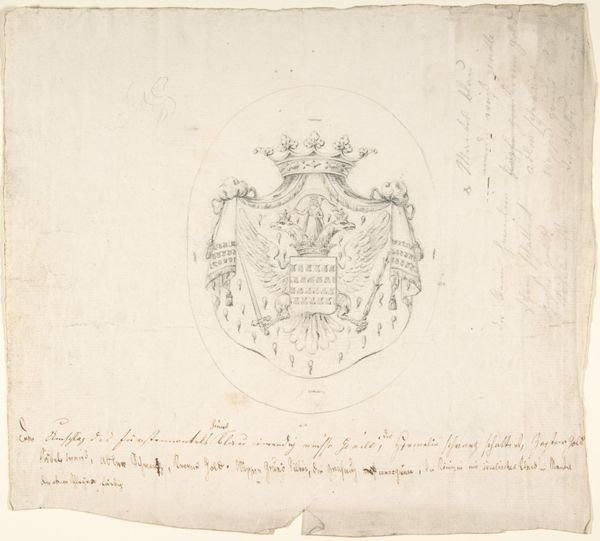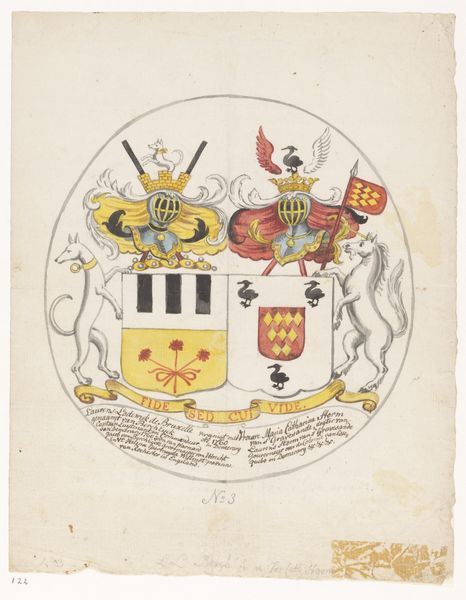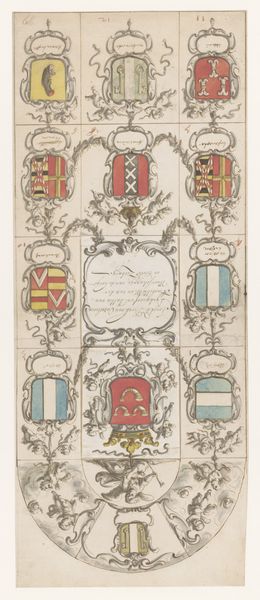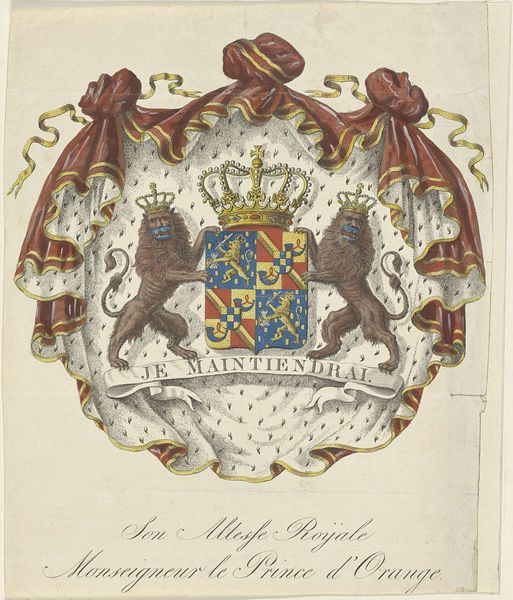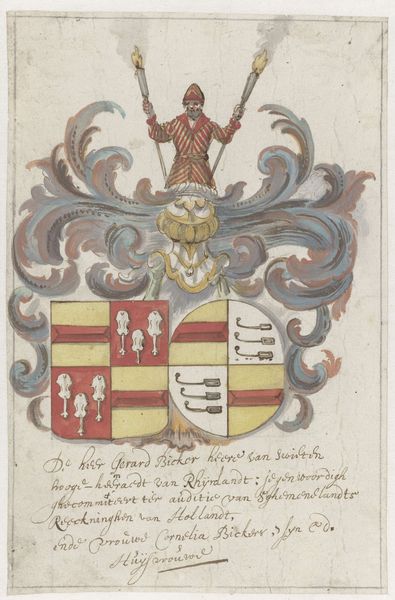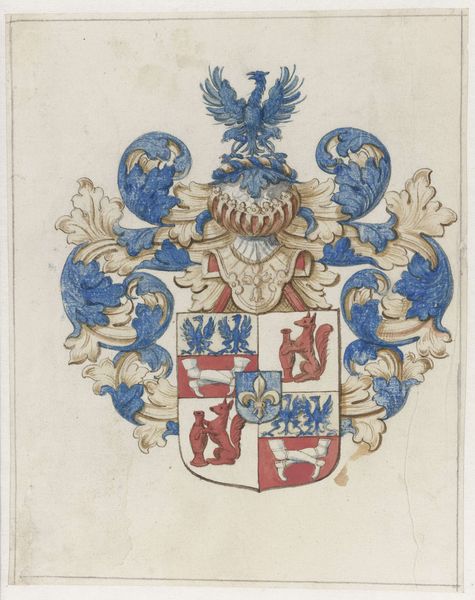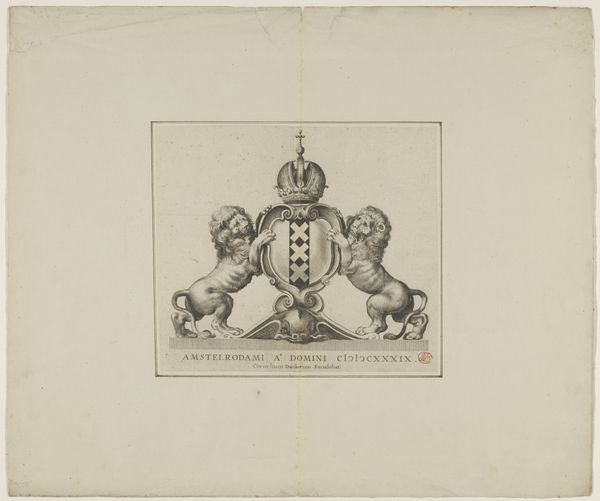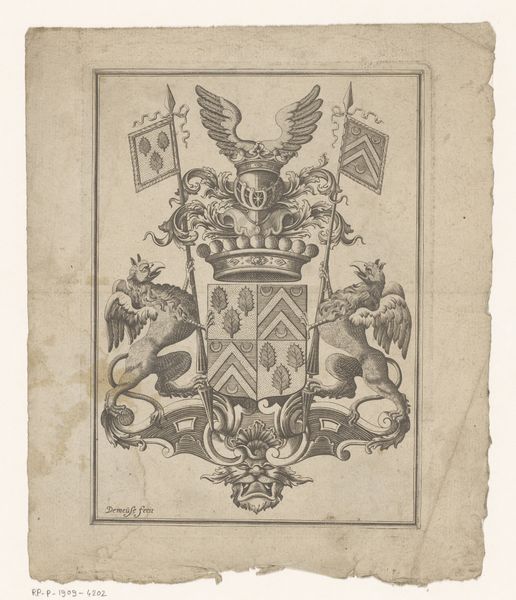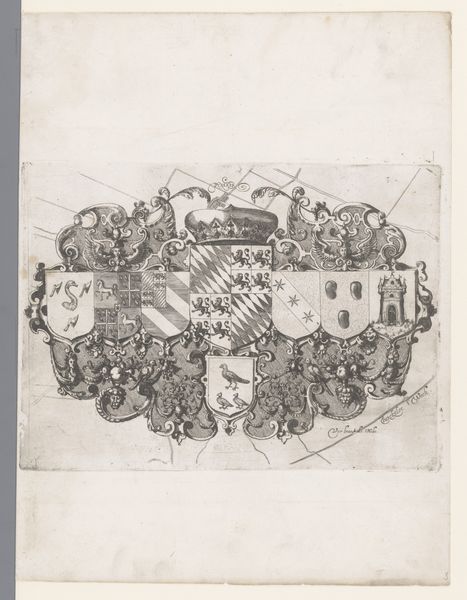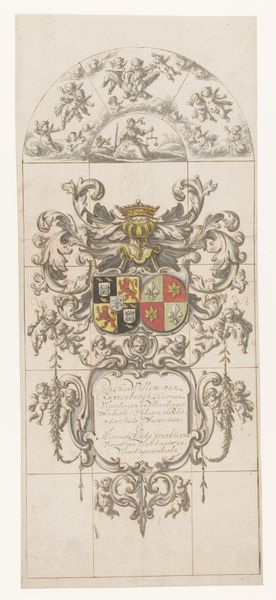
drawing, paper, watercolor, ink
#
drawing
#
paper
#
watercolor
#
ink
#
watercolour bleed
#
watercolour illustration
#
genre-painting
#
watercolor
Dimensions: height 227 mm, width 185 mm
Copyright: Rijks Museum: Open Domain
Curator: Let’s turn our attention to this fascinating watercolor and ink drawing on paper, “Stamboom van Henrich Brandes,” dating from around 1760 to 1790. Editor: My initial impression is one of heraldic authority, but rendered with a somewhat gentle, almost childlike hand. The colors are muted, and there's a charming asymmetry that softens the otherwise rigid structure. Curator: Absolutely. We're seeing a family tree, or a "Stamboom," presented in the form of a coat of arms. In heraldry, every element carries symbolic weight, doesn’t it? This piece really delves into the visual language of lineage and social standing. Editor: Yes, the use of specific tinctures – red and silver here – alongside charges like the horizontal bar and those bees…it all speaks to very specific values and histories embedded within the Brandes family. The slight "watercolor bleed" lends an almost ethereal quality. Curator: Exactly, heraldry is filled with loaded images that evolve through generations. Notice how the symbols are arranged and how certain patterns are emerging through its structure and composition, perhaps conveying aspects of wealth, virtue, or even historical alliances? Also notice the crowned helm, an assertion of sovereignty? Editor: And there is something visually compelling about that integration, how the illustration style works both with and against the constraints of the crest form. I’m particularly intrigued by the inclusion of bees… Are those merely decorative flourishes or did the insects themselves, at some time, relate to the family profession, possibly as honey farmers? Curator: I would suggest those insects relate more to connotations such as diligence, cooperation, or eloquence—qualities highly valued by civic or noble families. I think we also see the claim for recognition within a societal structure through its aesthetic and cultural value during its period. Editor: I see what you mean, it almost seems to operate on dual symbolic channels, both family lineage as well as individual character. Curator: In the end, this artwork can be viewed not only as a visual statement of family identity, but also as a compelling artefact rooted in time and filled with aspirations for the future. Editor: Agreed. It is a unique, deeply layered symbolic gesture which encapsulates not only lineage, but aspirations for civic and cultural recognition during that era.
Comments
No comments
Be the first to comment and join the conversation on the ultimate creative platform.
